
 |
Eager Space | Videos by Alpha | Videos by Date | All Video Text | Support | Community | About |
|---|

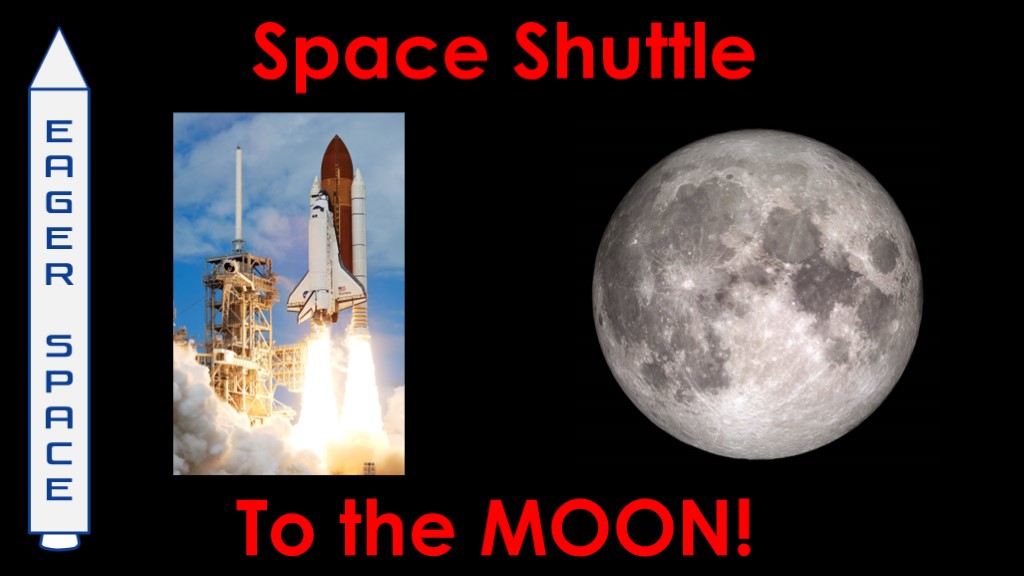
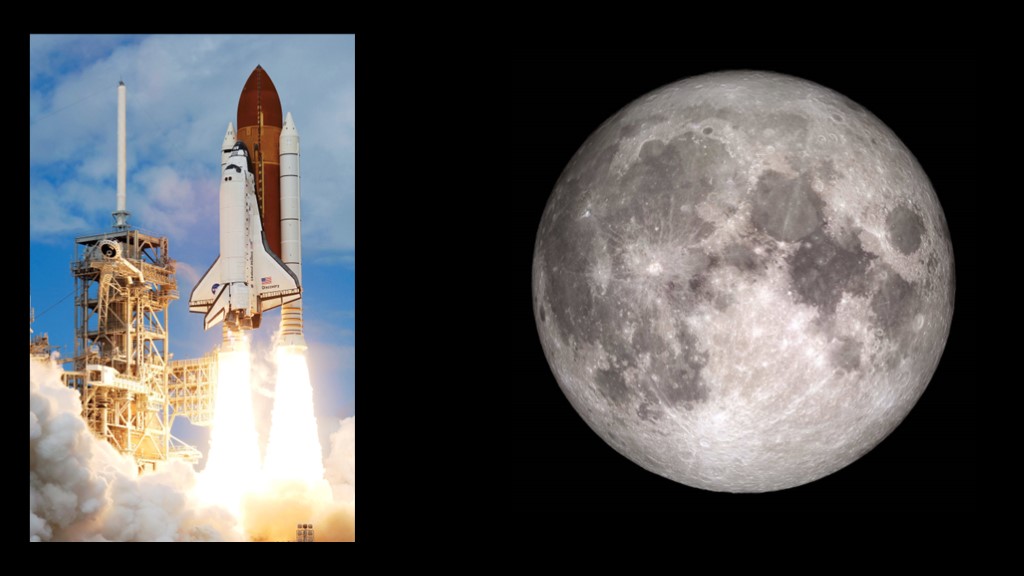
NASA flew the space shuttle 135 times over 30 years, but they always flew to low earth orbit. Why didn't they fly the shuttle to the moon?
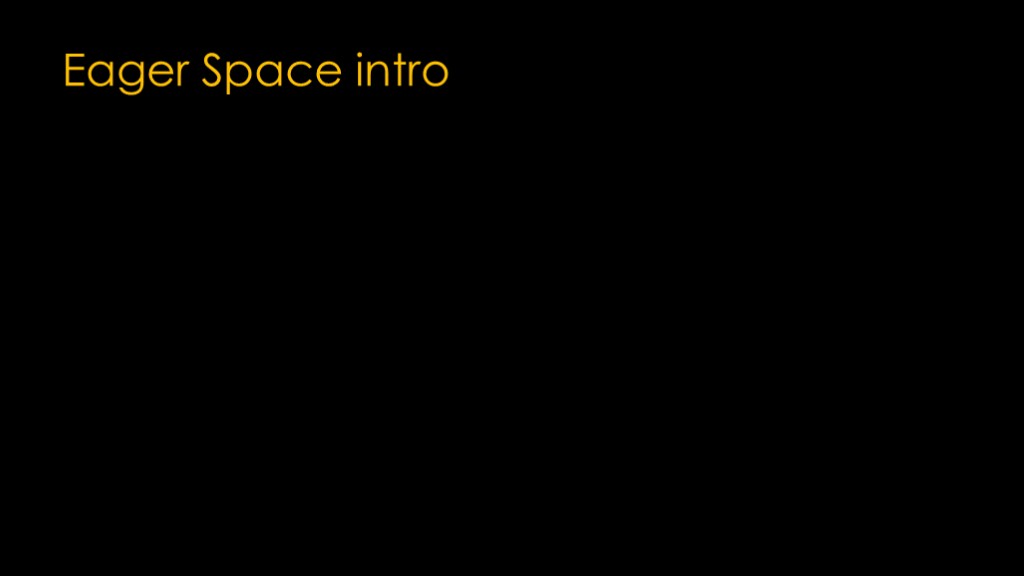
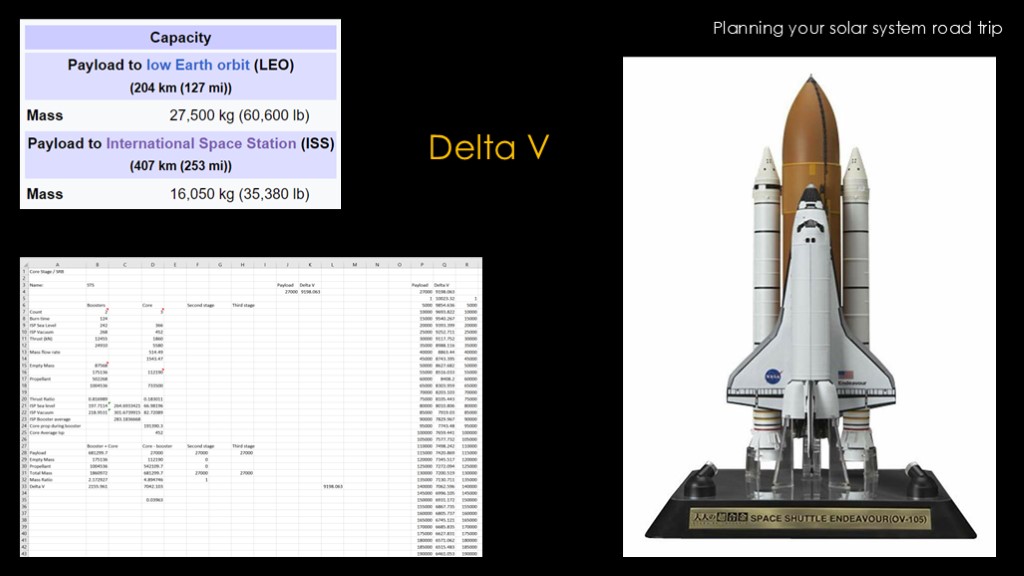
To answer this question, we need to understand the capabilities of the shuttle.
We'll start with the published capabilities, courtesy of the Wikipedia article. It can carry 27,500 kilograms to a 204 km orbit and it can carry 16,050 kilograms to the international space station in a 407 km orbit.
It doesn't tell us how much payload it can carry to the moon - that would be listed as "TLI payload", an abbreviation for trans lunar injection. To figure that out, we need a model.
No, not that kind of model, a mathematical one. The one I'm using runs in Excel, and you plug in a lot of detailed information about the rocket and it will estimate how much payload the rocket can carry to different destinations. The distance measure between places in space is known as "delta V". If you want more details on delta v, you can watch my video, "planning your solar system road trip", but if you think of the delta V between earth and the moon in the same way you think of the driving distance between Seattle and San Diego, you'll be on the right track.
The numbers my model produces are estimates - there are many details that the model ignores.
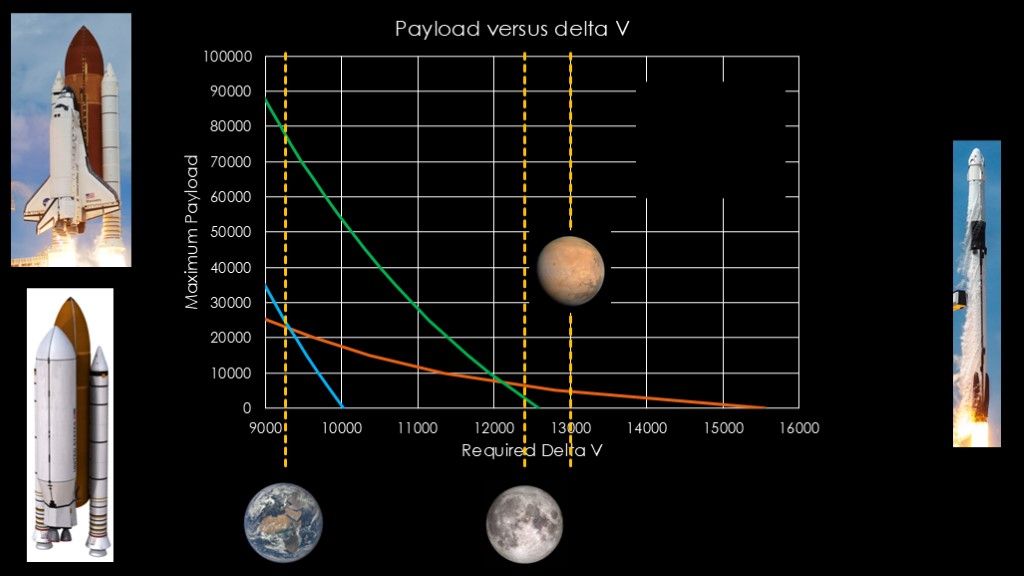
We can understand the capability of a vehicle by looking at the payload it can take to different destinations.
I'm going to start with SpaceX's Falcon 9 since most people will be familiar with it.
Getting into low earth orbit takes somewhere around 9300 meters per second of delta V, and the Falcon 9 can carry about 22,800 kilograms to that orbit.
Getting to the moon takes around 12,500 meters per second of delta v, and Falcon 9 can carry about 6000 kilograms to the moon. Note that is going around the moon - getting into lunar orbit or landing would be up to the spacecraft.
Getting to Mars is surprisingly only about 13,000 meters per second, and Falcon 9 can send 4000 kilograms of payload there.
Let's add in the line for the shuttle...
Shuttle can carry about 27,000 kilograms into low earth orbit, but the line slants down pretty quickly, and the maximum delta V that shuttle can reach - with an empty payload bay - is only about 10,000 meters per second. That's a long way from the moon.
This seems wrong...
Falcon 9 is a medium-sized rocket, with a takeoff mass of around 550 tons. Shuttle is a very large rocket, with a takeoff mass of 2030 tons.
Let's add one more vehicle to the mix. In 2009, NASA studied a shuttle-derived Heavy Lift vehicle that will help us understand what is going on. Instead of the orbiter, this vehicle had a large payload bay.
Here's the graph for that vehicle. It can lift nearly 80,000 kilograms to low earth orbit, or nearly 3 times what shuttle could lift, and it can *barely* get a payload of perhaps 3000 kilograms to the moon.
What are the differences between these three vehicles?
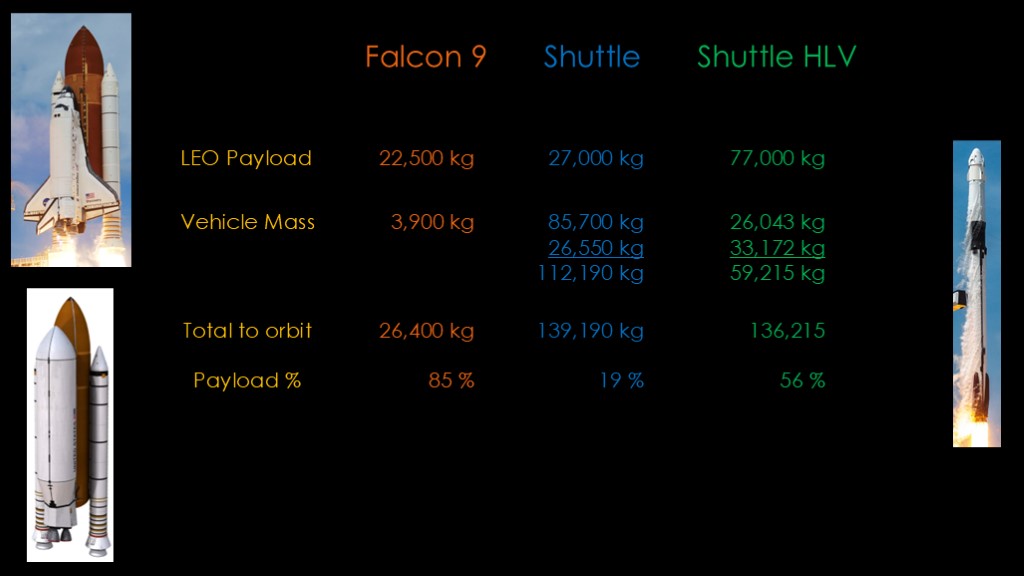
Starting with the Falcon 9, its payload to low earth orbit is 22,500 kilograms. The second stage that carries the payload adds a further mass of 3900 kilograms, and the total mass to orbit is 26,400 kilograms. A little math tells us that 85% of the mass to orbit is payload.
Looking at shuttle, the payload to low earth orbit is 27,000 kilograms. The shuttle weighs 85,700 kilograms and the super lightweight external tank weighs 26,550 kilograms, so the total vehicle mass is 112,190 kilograms.
The total to orbit is 139,190 kilograms and the payload percentage is 19%.
The shuttle hlv has a payload of 77,000 kilograms. The vehicle mass is 26,043 kilograms, the tank used in the studies I looked at was a slightly heavier tank at 33,172 kilograms, so the vehicle mass was 59,215. That's roughly 50% the shuttle vehicle mass. The total to orbit is 136,215 kilograms - very close to the shuttle total - and the payload percentage is 56%
The vehicle mass for shuttle is a seriously limiting factor - the heavy shuttle has to be carried all the way to the destination orbit along with the external fuel tank. The shuttle HLV is quite a bit better because the payload container is far lighter than the shuttle orbiter.
Another way to look at this is that every kilogram of mass in the shuttle is a kilogram of mass that is not in the payload.
The Falcon 9 curve is so flat because of the very high payload ratio, and that's because the vehicle mass is so small.
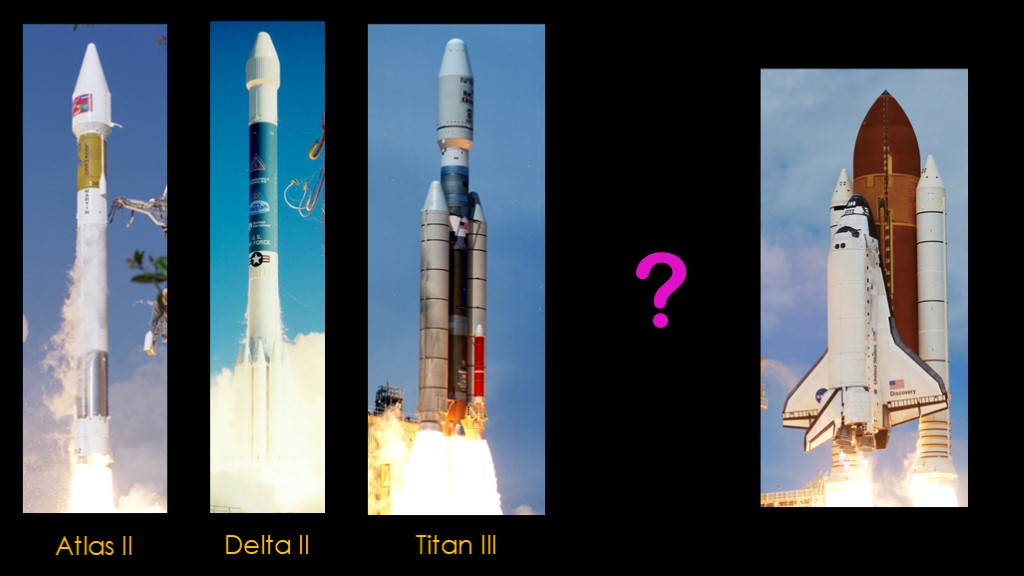
The low delta v was a problem for shuttle. It was supposed to replace the existing US expendable rockets - the Atlas II, the Delta II, and the Titan III - but all of those rockets had light second stages like the Falcon 9, and therefore could launch communications satellites, spy satellites, and planetary missions directly. Shuttle was unable to do those missions directly.
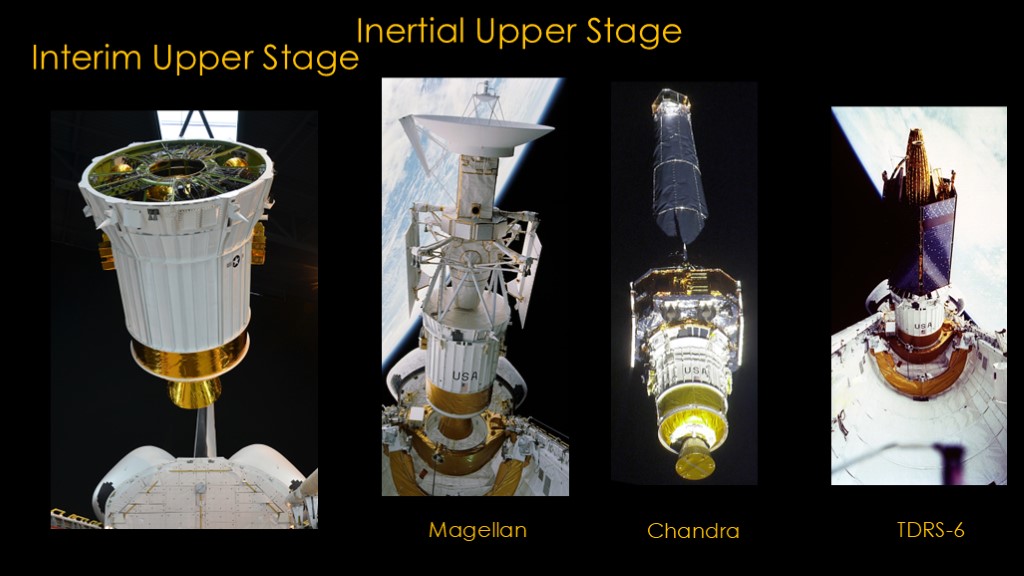
NASA's solution was what is known as a "kick stage" - an additional rocket stage carried into orbit and used to supply additional delta v to a payload to get it to a more challenging destination.
NASA called this the Interim Upper Stage, and it is composed of two solid fuel motors, so it's actually two stages.
It was later renamed to the Inertial upper stage when the more advanced Centaur upper stage was cancelled.
The inertial upper stage launched the Magellan probe to venus, the Chandra x-ray observatory, and many of NASA's tracking and Data relay satellites.
NASA's solution to get payloads to higher delta v destinations was a rocket carried in the shuttle bay along with the payload - these rockets are usually known as "kick stages" as they give payloads an extra kick. It was known initially as the "interim upper stage" and was then renamed the "inertial upper stage" when the more capable stage that was to follow was cancelled.
The interim upper stage used two solid rocket motors and was flown on 15 shuttle flights, including the Magellan probe to Venus, the Chandra X-ray observatory, and NASA's TDRS communications satellites.
The kick stages provides additional delta v to payloads at the cost of a significantly reduced payload.
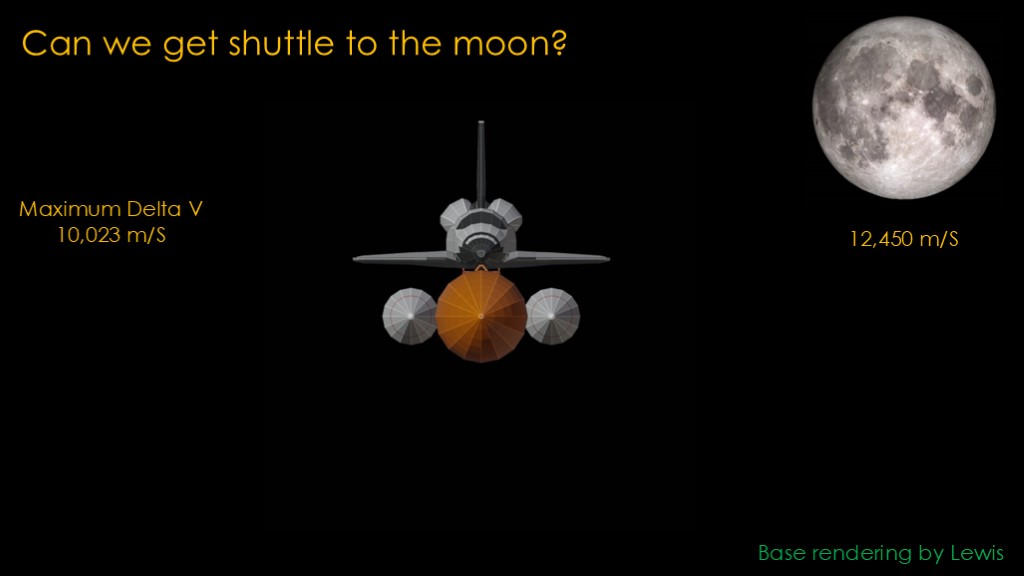
But that wasn't really the question...
The question was whether we can get the shuttle to the moon...
The stock orbiter gives us 10,023 meters per second of delta v, and we need 12,450 meters per second to get to the moon.
We need a more powerful shuttle design.
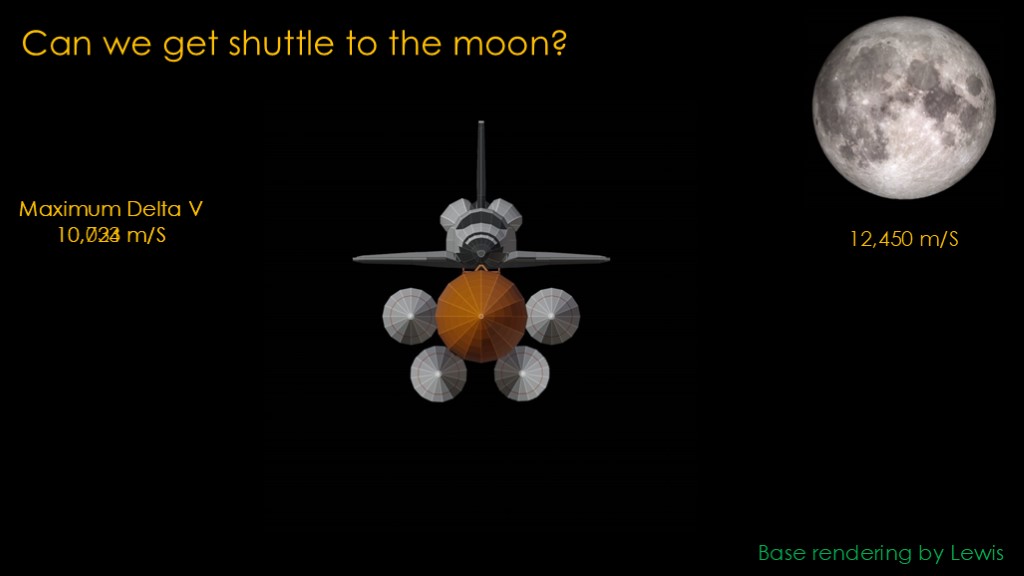
Here's my first idea. Let's double the solid rocket boosters...
That helps a little, but only gets us to 10,734 meters per second of delta v. I explored adding up to 10 boosters but it didn't get us to the moon and I couldn't figure out how to hook them all on.
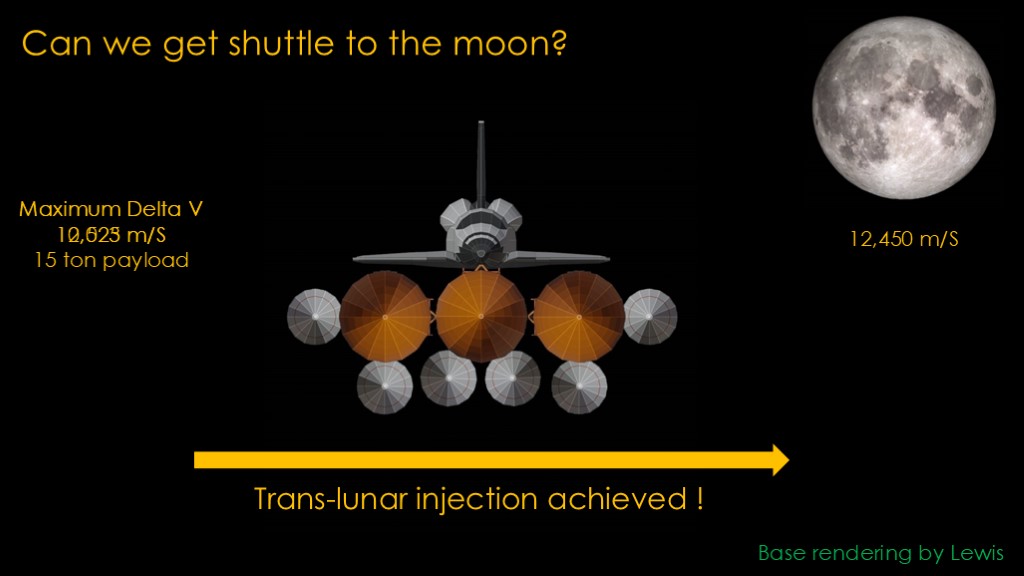
We need more tanks. This design uses three tanks and 6 boosters, and to deal with the extra mass of the tanks, there are engine pods with three engines under each of the additional tanks.
It gives us 12525 meters per second of delta v *with* a 15 ton payload.
We have achieved the ability to send shuttle on a trip to the moon; trans-lunar injection achieved.
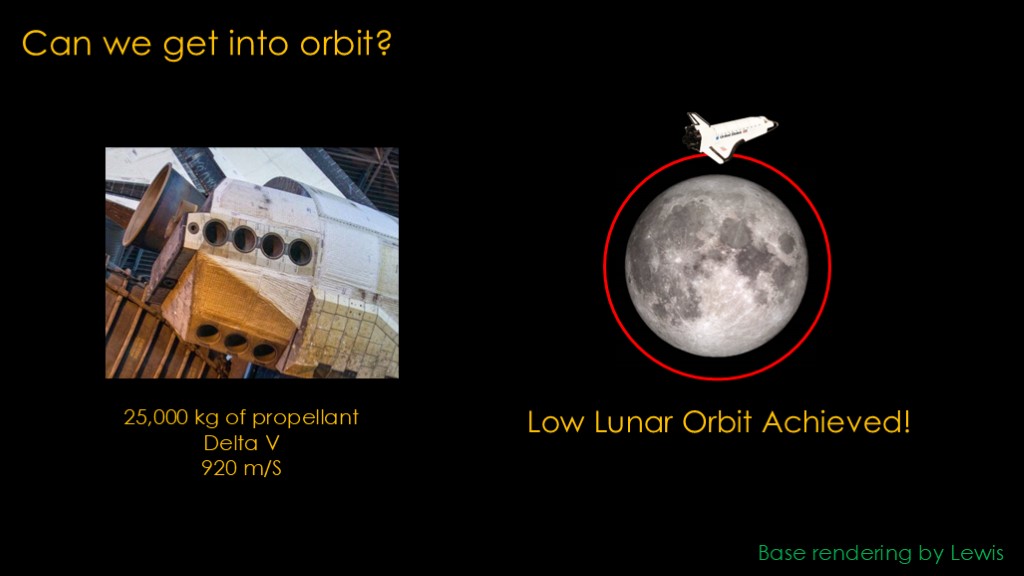
Can we get into orbit around the moon?
The propulsion system on the shuttle is the Orbital Maneuvering System. If we use the built-in OMS propellant of about 10,000 kilograms and use all of our payload for additional propellant, we have 25,000 kilograms of propellant and that gives us about 920 meters per second of delta V.
That is just enough to put the shuttle into the low lunar orbit that the Apollo program used. Unfortunately, we are out of propellant and can't get out of that orbit to return to earth.

If we adopt the approach used by artemis, we can get into the Near rectilinear halo orbit that Orion uses and have just enough delta v to get out of that orbit and head back to earth.
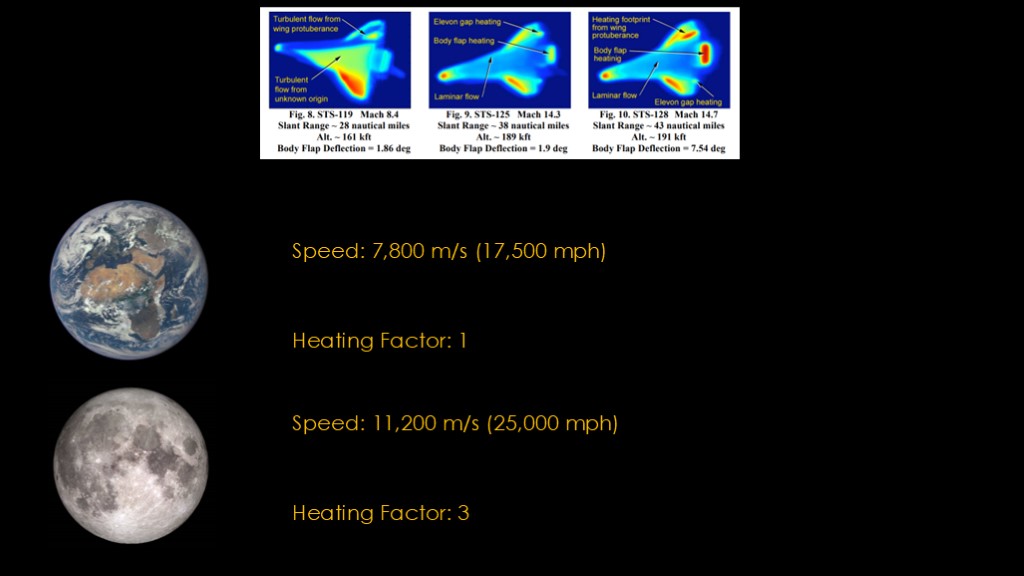
And here we run into a snag...
The shuttle's heat shield was designed to deal with returning from low earth orbit at a speed of about 7800 meters per second, or 17,500 miles per hour.
Coming back from the moon the speed is more than 40% faster. A vehicle reentering at that higher speed will experience more than 3 times the reentry heating, and the shuttle would not survive a reentry at that speed.
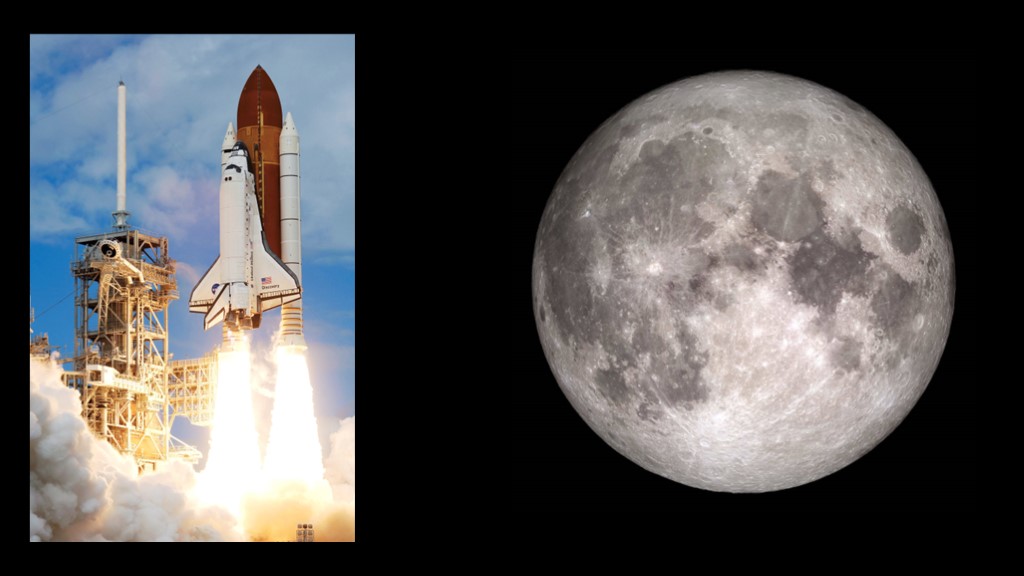
The shuttle did not have the performance to make it to the moon, largely because the shuttle itself was so heavy.
We could maybe sorta put together a version that could make it into lunar orbit and back, but the shuttle could not survive reentering the earth's atmosphere when returning from a lunar mission.
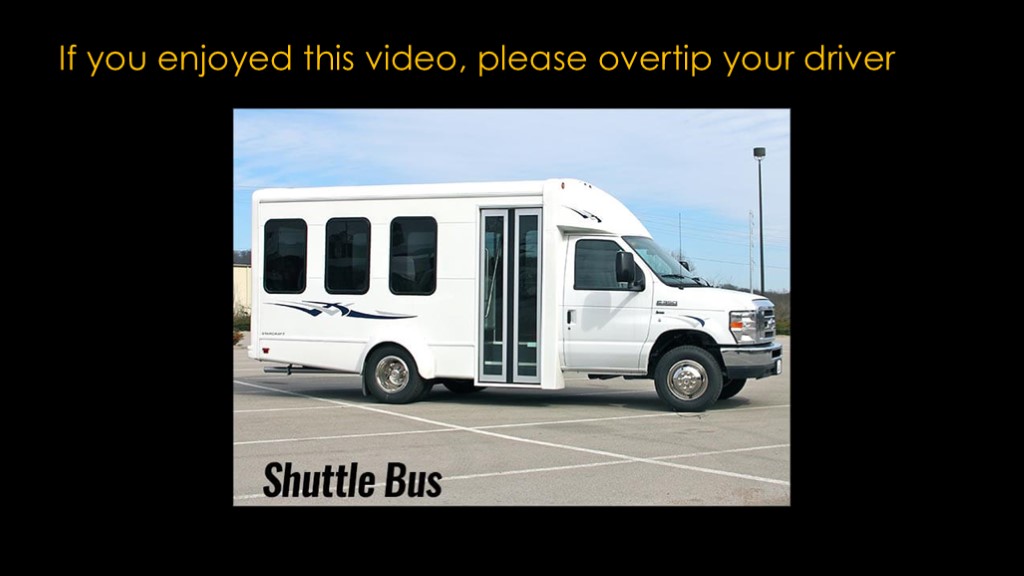
If you enjoyed this video, please overtip your driver the next time you ride a shuttle bus.